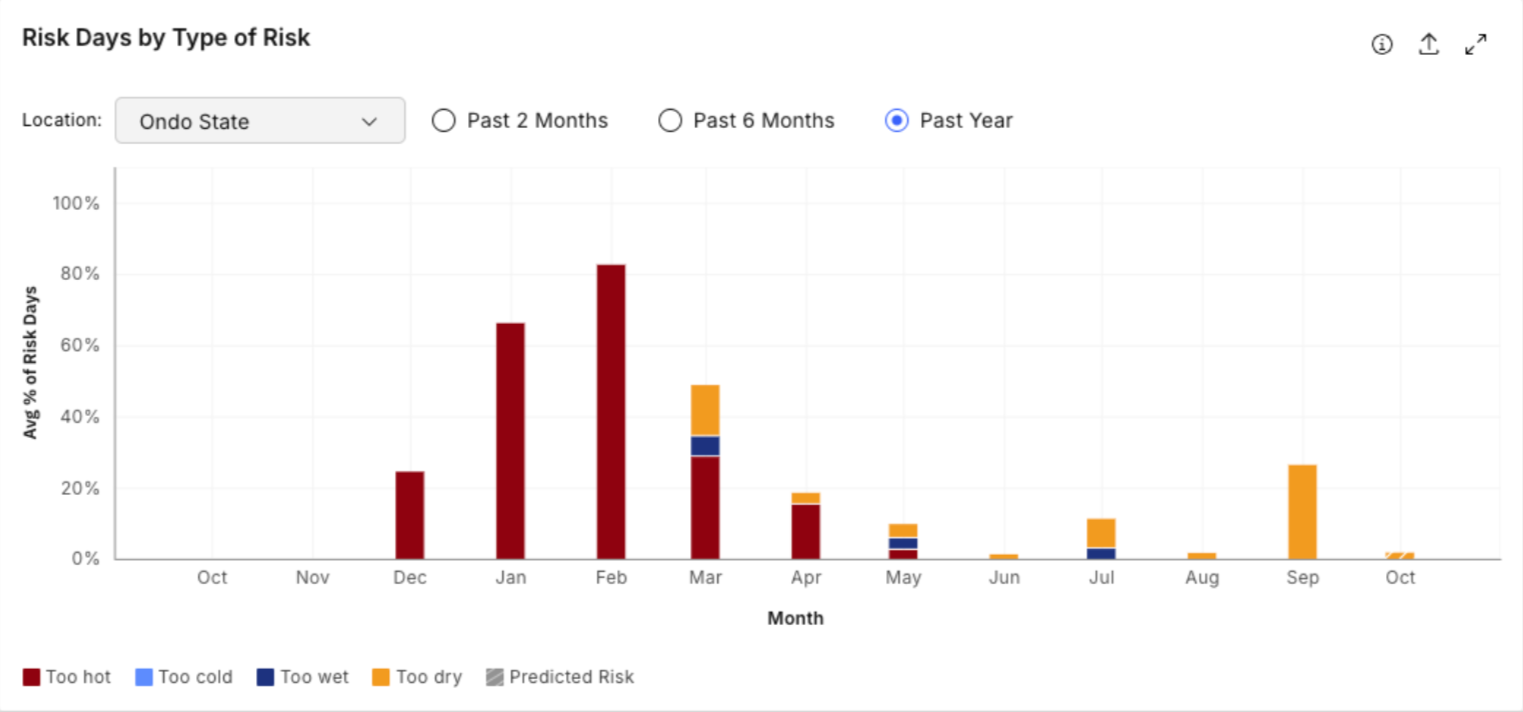Helios Flagged Risk Months Before African Cocoa Prices Skyrocketed 200%
At a glance: Helios helped customers spot the West African cocoa beans supply shortage four months before the media reported it and seven months before prices skyrocketed, showcasing the ability to predict supply chain disruptions.
What happened?
Over the past year, cocoa prices surged to their highest levels in 25 years, driven by supply disruptions in West Africa. Prices had been steadily climbing since the fourth quarter of 2023, and on April 19, 2024, they reached a record high of $10.97 per kilogram. This spike was triggered by the combined effects of El Niño and climate change, which brought higher temperatures and erratic rainfall to cocoa-growing regions. The Helios platform identified this sharp increase immediately in April 2024, well ahead of the media, which reported the surge five weeks later.
How Helios Helped
Helios' platform gave an early warning beginning in January 2024, flagging the heatwave and drought in West African cocoa regions well before the price surge. The risk peaked between February and April 2024, while the media reported months later, once the price increased. Thanks to the early warning from Helios, customers were able to anticipate the major price shift before their competitors and adjust their procurement strategies more effectively. Figures #1 and #3 display our climate risk variable (WA%R), which is crucial to identifying disruptions. Figures #2 and #4 reflect the heatwaves in two of West Africa’s main cocoa production regions. The sharp cocoa price surge in April is a clear response to the increased risk we identified by analyzing data in the months prior.
Figure #2
Ondo State, which produces 28% of Nigeria’s cocoa, faced significant risks from extreme heat and drought over the past year. High temperatures from December to February, along with dry spells in March and September, adversely affected cocoa growth and yield.
Figure #3
Côte d'Ivoire, which produces 44% of the world's cocoa, had its climate risk peak at 80% in March 2024, indicating a period of significant climate vulnerability. This sharp rise from moderate to high risk underscored the extreme climate conditions impacting cocoa production, requiring swift adaptation from Helios’ customers to search for alternative suppliers and lock in prices before the spike.
Figure #4
Ghana, which produces 14% of the world's cocoa, faced excessive heat over the past year. In February 2024, Ghana saw an average of more than 60% of risk days when the temperature was too high, making it unsuitable for growing cocoa.




